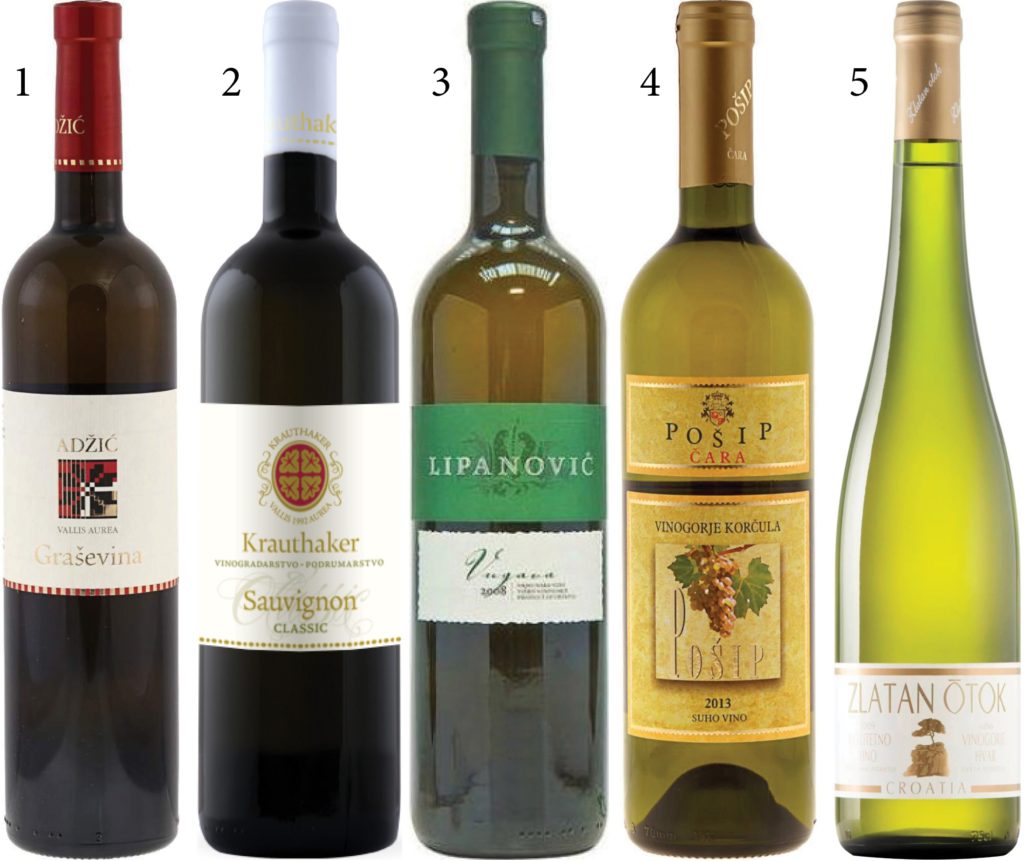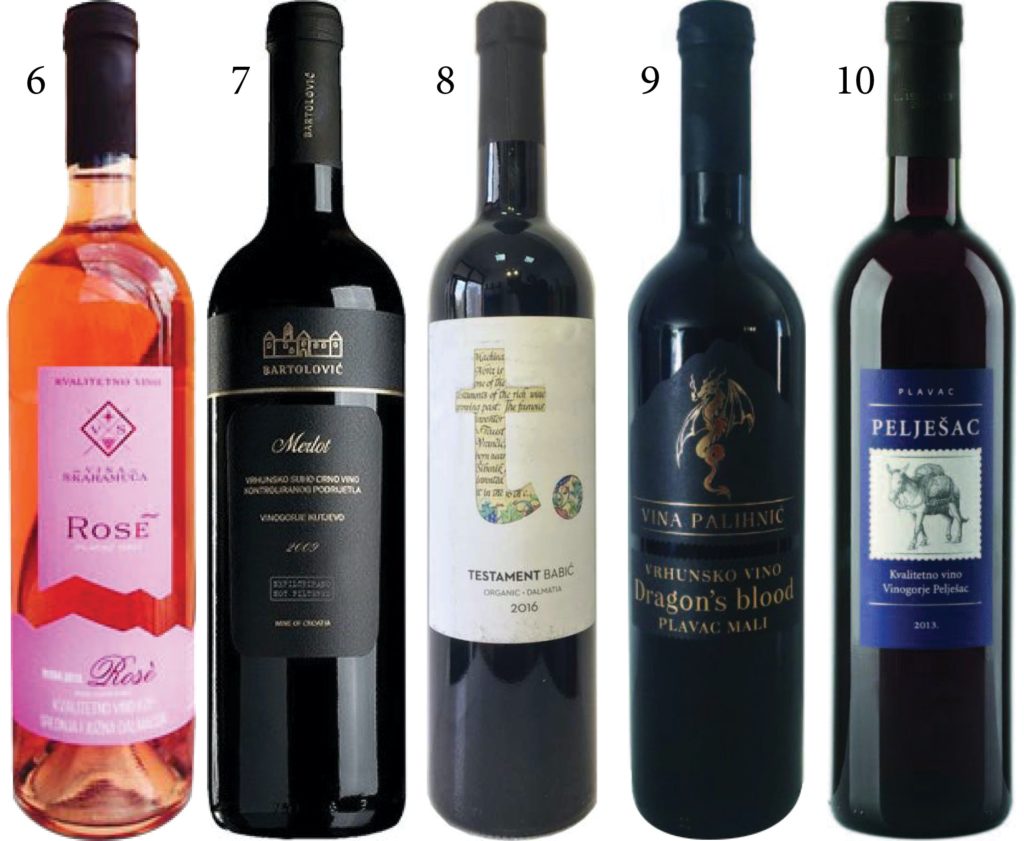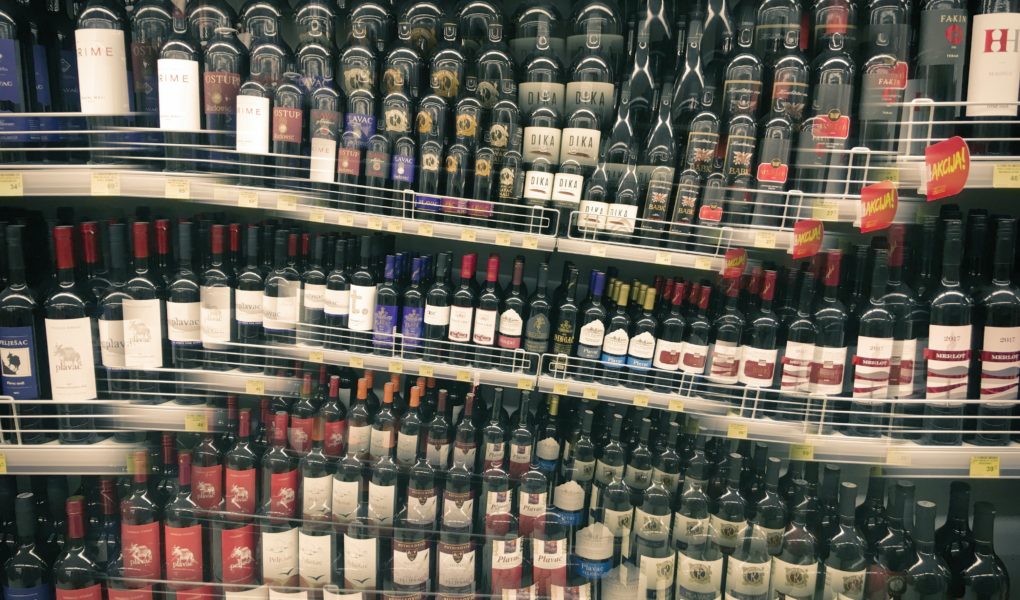We all have the same trouble buying wine: it’s the risk of getting something you don’t like. And that risk is sky-high when you’re standing in a foreign supermarket staring at a wall of bottles labeled with grapes you’ve never heard of. But with a native guide (native to wine, that is) you can avoid expensive mistakes and start to build a personal wine list of favorites.
Here are 10 Croatian bottles from various Tommy, Konzum, Spar, Studenac and Victa stores around Split that are great quality and value for less than 100 kuna. The key to buying supermarket wine is to keep an eye on freshness. For white wines in this price range, avoid buying if the vintage year on the bottle is more than two years ago, and for reds, more than three. By summer of any year, you should be able to find whites and rosés from the previous year. If it all seems older than it should be, try a different store. (The store may have an overstock and the wine will sit there until it sells. This problem may be more evident starting in 2020 because of unsold surpluses due to the virus.) Also, avoid stores whose wine shelves are in the window—you don’t want baked wine!
The prices below are what we paid; they may be slightly different where you shop.

White Wine
1. Adžić Graševina, Kutjevo, 75kn This is the kind of white wine the critics call “pretty,” because it’s fairly delicate, with a floral and pear aroma. If you could see smells, this might look like lace. It’s not sweet at all, but has a nice perfume and is great for sipping. The Graševina grape is a real star in Kutjevo, in Croatia’s eastern wing.
2. Krauthaker Sauvignon Classic, Kutjevo, 65kn Vlado Krauthaker is one of the most prominent wine makers in Kutjevo—all of his wines are solid, but I particularly like his Sauvignon Blanc because it’s not trying to be from somewhere else. This isn’t your tropical-flavored Sauvignon. Instead you’ll get a combination of fresh-cut grass, lemongrass and lemony herbs. Try it with smoked salmon crostini with herbed cream cheese and cucumber.
3. Lipanović Vugava, Vis, 70kn Vis island is pretty isolated, so it’s not surprising that the Vugava grape hasn’t gone traveling much, although you can find it growing here and there on other islands in Dalmatia. But for a true taste of Vis, it’s hard to do better. It makes a rich, ripe wine with yellow apple and herb aromas that goes well with shrimp and shellfish, or Asian ingredients like coconut, ginger, creamy curries. Pad Thai, anyone?
4. P.Z. Pošip Pošip, Korčula, 85kn During Croatia’s communist period, wine grapes had to be brought to one of many co-operative wineries at harvest. A respectable number of these remain, and some are very well regarded for making superior wine. Pošip is Korčula’s renowned white grape, and the co-operative P.Z. Pošip, in Čara, makes a great version, with ripe apricot flavors and a satisfying weight in your mouth. A super sipper.
5. Zlatan Otok white blend, Hvar, 42kn Smell this wine and it’s likely to remind you of driving across Hvar in summer: dusty, sun-roasted roadside brush, wild thyme, a little rosemary. There are also whiffs of golden apple and quince here, and maybe some melon. It’s a full-bodied blend of local grapes including Bogdanuša and Prč. All that in a 42-kuna bottle—impressive!
Rosé Wine
6. Skaramuča Rosé, Pelješac, 50kn A lot of rosés from Plavac Mali end up in the Opol style—more like a light red, without the refreshing nothingness of a true pink. This one is a real rosé, and it somehow manages to taste like the landscape: touches of sea brine, wild herbs and scrub brush plus a light cherry-cranberry fruitiness. With zero sweetness, this wine goes with virtually any summer food you could think of!

Red Wine
7. Bartolović Merlot, Kutjevo, 80kn This Merlot is one of a few exceptions to the “don’t buy cheap, old wine” rule. The one I tasted was 7 years old and it was great, with generous aromas of black cherry, oak wood and a touch of vanilla. This one has a refreshingly bitter finish (think radicchio or unsweetened chocolate) and hearty tannins, so it’s best with meats.
8. Testament Babić, Northern Dalmatia/Šibenik, 90kn One of the best things about Croatian wine is all the local grapes that grow nowhere else in the world. Few sommeliers in New York or Paris have tasted Vugava or Babić, but here you can casually sip any of Croatia’s hyper-local, exclusive varieties. Babić is at home near Šibenik, where Testament grows organic grapes for a wine that tastes like a salad of blackberries, cherries, and blueberries with a touch of lily perfume. Fruity and easy to drink.
9. Vina Palihnić Dragon’s Blood Plavac Mali, Pelješac, 50kn A goofy name, but a very well made wine from one of the regions you want your Plavac to come from. If you’re looking for a crowd-pleaser red just for sipping, this is it: it’s juicy but not heavy, easy on the tannins, with rich blackberry and red delicious apple flavors. It’s also great with lamb and a tomato-cucumber-feta salad.
10. Vinarija Dingač Peljesac, Pelješac, 40kn If the wine right above this one is best described as fruity (and it is), this Plavac Mali is on the earthy end of the spectrum. And if the word “crowd-pleaser” leaves you cold, this wine might seem more dignified. Here, earthiness tastes like red cherries rather than sweet black ones, like autumn leaves, a touch of black tea, and pine or resinous wild herbs. This is less for sipping, more of a food wine—have it with lamb, roast pork, stuffed cabbage.
[All photos: Staff/CCM]

